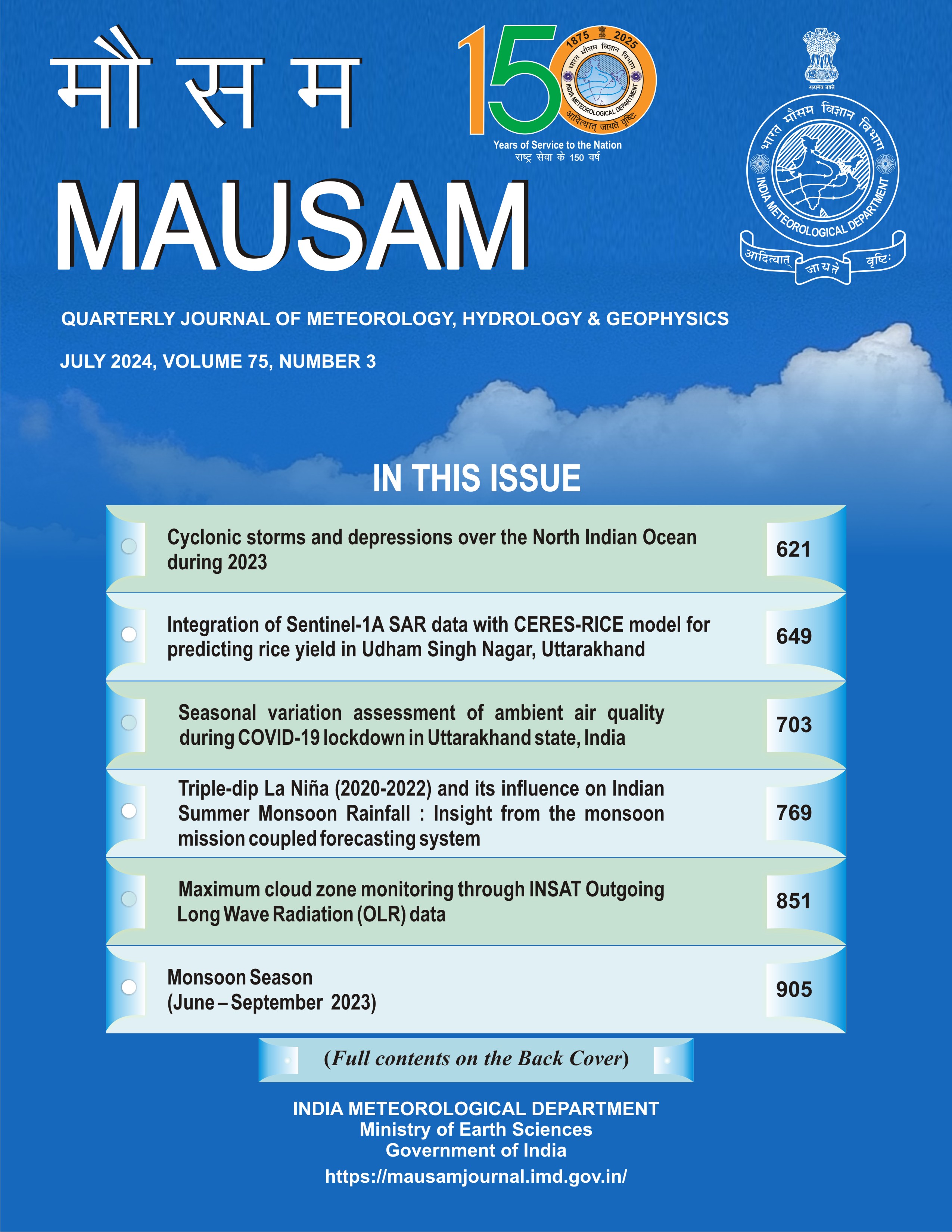Probability Analysis of Annual and Monthly Rainfall in Mizoram, India: Evaluating Goodness of Fit and Identifying Best Probability Distributions
DOI:
https://doi.org/10.54302/mausam.v75i3.6250Abstract
This study presents a comprehensive analysis of the probability distribution of rainfall data in Mizoram, a state in Northeast India, from 1986 to 2021 by 18 probability distributions. The objective of this study is to identified the best-fit probability distribution of annual and monthly rainfall of Mizoram. The Kolmogorov-Smirnov, Anderson-Darling, and Chi-Square tests were conducted to determine the goodness of fit for each distribution. Additionally, based on the total score obtained from all three tests, the probability distribution with the highest score was included as a fourth distribution. After identifying the three best-fitting distributions from the respective tests, the parameters were used to generate random numbers for each period of analysis. The best-fit probability distribution was determined based on the minimum absolute deviation between actual and estimated values. The results show that the General Extreme Value distribution was found to be the best fit for 5 out of 12 months, followed by Log Pearson 3 for two months out of 12months. Gamma (3P) distribution was found to be the best fit for the annual rainfall of Mizoram. Additionally, the month of August contributes the highest annual rainfall with 16.8% while January contributes the lowest with 0.4%. These findings can be useful for hydrological and agricultural planning in Mizoram in light of climate change and variability.
Downloads
Published
How to Cite
Issue
Section
License
Copyright (c) 2024 MAUSAM

This work is licensed under a Creative Commons Attribution-NonCommercial 4.0 International License.
All articles published by MAUSAM are licensed under the Creative Commons Attribution 4.0 International License. This permits anyone.
Anyone is free:
- To Share - to copy, distribute and transmit the work
- To Remix - to adapt the work.
Under the following conditions:
- Share - copy and redistribute the material in any medium or format
- Adapt - remix, transform, and build upon the material for any purpose, even
commercially.



